Candida vulvovaginitis pathophysiology: Difference between revisions
Jump to navigation
Jump to search
Dima Nimri (talk | contribs) No edit summary |
Dima Nimri (talk | contribs) |
||
| Line 8: | Line 8: | ||
===Genetics=== | ===Genetics=== | ||
Genetic factors could be involved in the pathophysiology of [[Candida]] [[vulvovaginitis]]. Supporting evidence is that many cases were found to be more common in African-American women, run in families, as well as being associated with ABO-Lewis non-secretor phenotype, a rare blood group. In addition, women with [[Candida]] [[vulvovaginitis]] were found to have decreased concentrations of mannose | Genetic factors could be involved in the pathophysiology of [[Candida]] [[vulvovaginitis]]. Supporting evidence is that many cases were found to be more common in African-American women, run in families, as well as being associated with ABO-Lewis non-secretor phenotype, a rare blood group. In addition, women with [[Candida]] [[vulvovaginitis]] were found to have decreased concentrations of [[mannose binding lectin]] (MBL), hence, the variant (MBL) gene is thought to be a contributing factor in the development of [[Candida]] [[vulvovaginitis]].<ref name="pmid16256117">{{cite journal |vauthors=Liu F, Liao Q, Liu Z |title=Mannose-binding lectin and vulvovaginal candidiasis |journal=Int J Gynaecol Obstet |volume=92 |issue=1 |pages=43–7 |year=2006 |pmid=16256117 |doi=10.1016/j.ijgo.2005.08.024 |url=}}</ref><ref name="pmid18715406">{{cite journal |vauthors=Donders GG, Babula O, Bellen G, Linhares IM, Witkin SS |title=Mannose-binding lectin gene polymorphism and resistance to therapy in women with recurrent vulvovaginal candidiasis |journal=BJOG |volume=115 |issue=10 |pages=1225–31 |year=2008 |pmid=18715406 |doi=10.1111/j.1471-0528.2008.01830.x |url=}}</ref><ref name="pmid17560449">{{cite journal |vauthors=Sobel JD |title=Vulvovaginal candidosis |journal=Lancet |volume=369 |issue=9577 |pages=1961–71 |year=2007 |pmid=17560449 |doi=10.1016/S0140-6736(07)60917-9 |url=}}</ref> | ||
===Gross Pathology=== | ===Gross Pathology=== | ||
Revision as of 15:16, 20 October 2016
|
Candidiasis Main page |
Editor-In-Chief: C. Michael Gibson, M.S., M.D. [1]; Associate Editor(s)-in-Chief: Dima Nimri, M.D. [2]
Overview
Pathophysiology
Pathogenesis
Genetics
Genetic factors could be involved in the pathophysiology of Candida vulvovaginitis. Supporting evidence is that many cases were found to be more common in African-American women, run in families, as well as being associated with ABO-Lewis non-secretor phenotype, a rare blood group. In addition, women with Candida vulvovaginitis were found to have decreased concentrations of mannose binding lectin (MBL), hence, the variant (MBL) gene is thought to be a contributing factor in the development of Candida vulvovaginitis.[1][2][3]
Gross Pathology
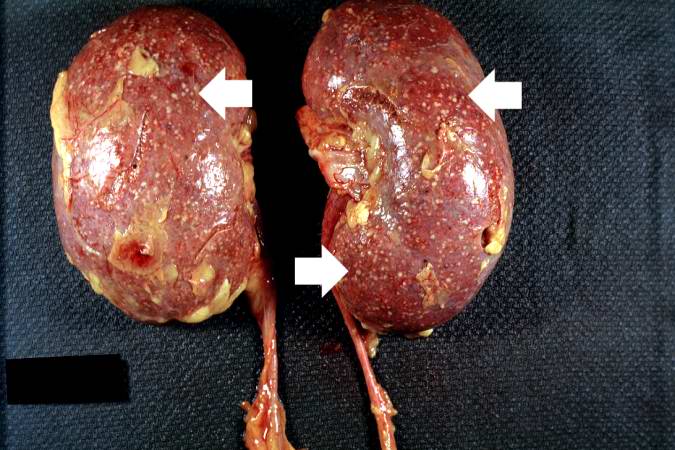
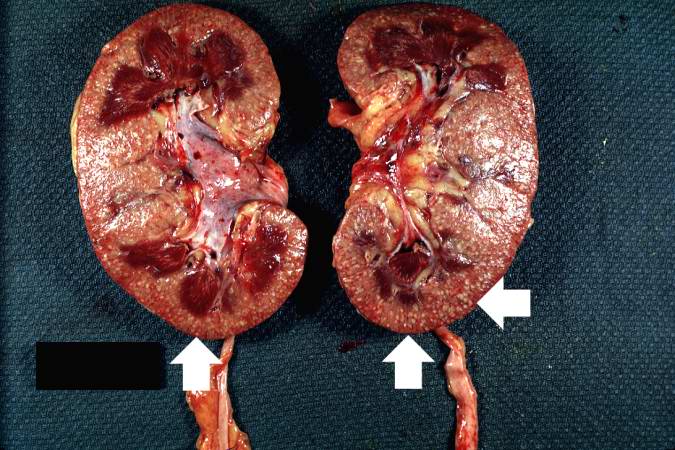
Microscopic Pathology
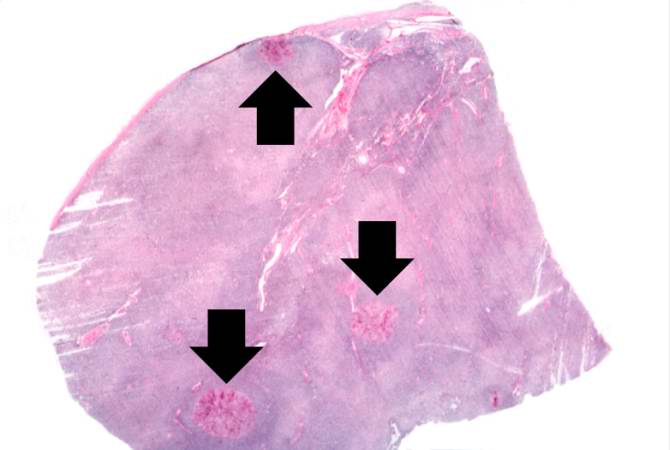
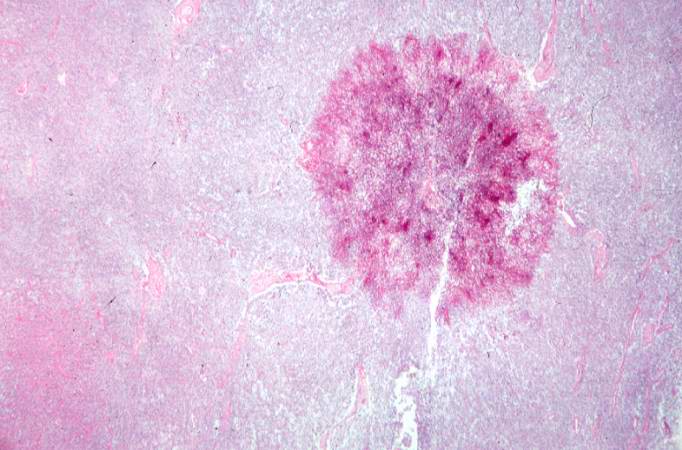
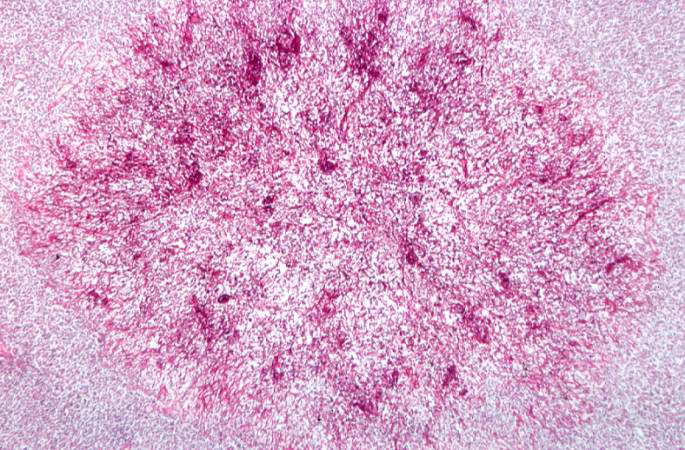
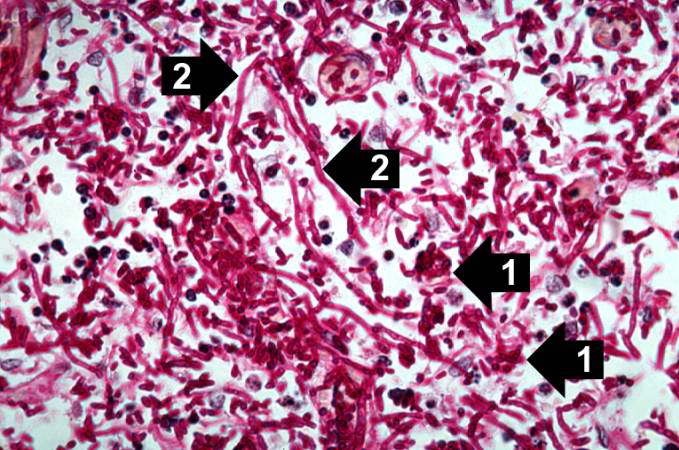


Associated Conditions
References
- ↑ Liu F, Liao Q, Liu Z (2006). "Mannose-binding lectin and vulvovaginal candidiasis". Int J Gynaecol Obstet. 92 (1): 43–7. doi:10.1016/j.ijgo.2005.08.024. PMID 16256117.
- ↑ Donders GG, Babula O, Bellen G, Linhares IM, Witkin SS (2008). "Mannose-binding lectin gene polymorphism and resistance to therapy in women with recurrent vulvovaginal candidiasis". BJOG. 115 (10): 1225–31. doi:10.1111/j.1471-0528.2008.01830.x. PMID 18715406.
- ↑ Sobel JD (2007). "Vulvovaginal candidosis". Lancet. 369 (9577): 1961–71. doi:10.1016/S0140-6736(07)60917-9. PMID 17560449.